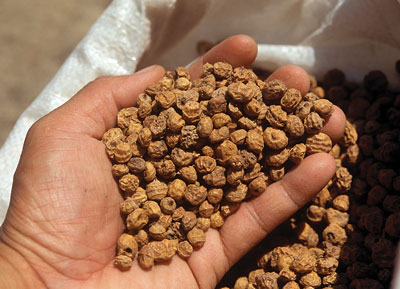There are many types of foods that can be planted in combination with wildlife habitat management practices to improve a property. A great plant for a variety food plots is chufa. In fact, chufa is an excellent planting for food plots for turkeys as well as food plots for ducks. Chufa is a Spanish word meaning “ground almond.” It is a type of nut-grass that produces a potato like tuber under ground. Most often grown for wild turkeys, these tubers are high in carbohydrates and protein.
As eluded to earlier, chufa makes for great food plots for ducks. This species is an excellent food source for wintering waterfowl when flooded. Chufas flooded up to a depth of about eight inches are readily eaten by dabbling ducks, especially mallards. Diving ducks such as ring-necks, redheads, and canvasbacks, love chufas when they are flooded to depths over one foot. Chufa commonly occurs in bottomland hardwood understories and on exposed mudflats of seasonally flooded lakes.

Good chufa tuber production depends on at least a three-month flood-free period during the growing season. In areas of Louisiana where chufa is found, research showed that chufas supplied 57% of the diet of mallards, 67% of the diet of pintails, and averaged 67% of food items eaten by wigeon, green-winged teal, blue-winged teal, ring-necked ducks, canvasbacks, and lesser scaup. Now that sounds like an effective, natural food plot.
So how can you establish chufa food plots on your property for wildlife and habitat management? Well, chufas grow best in moist soils but do not do well on sites that are extremely wet or flooded during the growing season. Duck ponds which can be drained and planted during summer and flooded during winter provide excellent habitat for waterfowl. Chufas can be planted from April through July and require 90 to 100 days to mature.
Seeds should be treated with some type of repellent such as Stanley Cro-Chex before planting to keep seed-eating mammals from digging them up. There are other commercial brands and types of repellents on the market, as well. Chufa food plots grow best in sandy loam soils but will grow even in hard clay. Consider chufa for food plots as a part of the wildlife habitat management activities on your property.